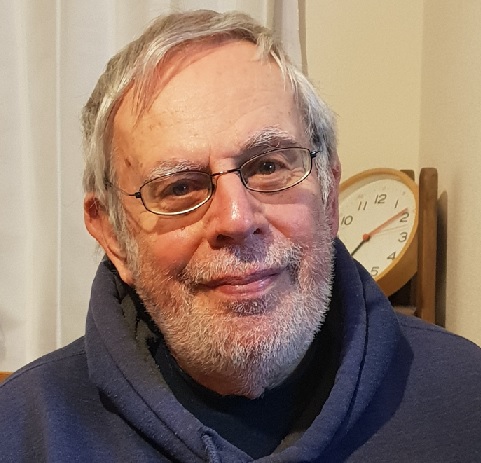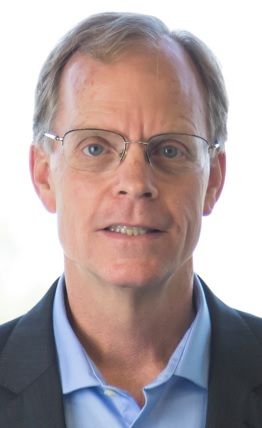IEEE Health Electronics Standard 11073
Find out the latest innovative technology on electronic medical devices as we delve into new innovative inventions in the Industry.

Join us for an interactive session on updates to the IEEE 11073 standard. Find out the latest technology in Health Electronics. The IEEE Standard 11073 enables connected medical devices, such as pulse oximeters, to communicate with other hardware, such as PCs, tablets, mobile phones, and telemedicine equipment. This plug-and-play interoperability frees health care providers and their patients to focus on treatment rather than wondering whether one manufacturer’s device will communicate with another’s.
Date and Time
Location
Hosts
Registration
-
 Add Event to Calendar
Add Event to Calendar
Loading virtual attendance info...
- Contact Event Host
-
Mike Brisbois
708.668.5488
mike.brisbois@ieee.org - Co-sponsored by IEEE PES Power and Energy Society
Speakers
 Ehud Baron of GoldTech Sino
Ehud Baron of GoldTech Sino
IEEE 11073
When talking about the IEEE 11073 standard, we think mainly about the connectivity aspects that should allow interoperability. In this talk I thought of bringing more the clinical and health related content that should be communicated. Foroohar will complement it with EE aspects.
As the major resource for the Healthcare system is the doctors' and nurses' time, the main goal is to relieve any burden that can be done by machine and connectivity of the devices according to the 11073 standards.
When talking about connectivity we imagine the plethora of medical devices surrounding the patients in a hospital intensive care unit (ICU) and OR. A patient connected to vital-signs monitors, receiving fluids by infusion pump, life support systems like ventilators, ECMO etc. Many devices are brought to the bedside and voluminous data records are being created for each patient. All this data needs to be captured in the patient record and communicated elsewhere.
The accuracy and completeness of a patient record created by harried clinicians whose attention to data entry tasks diverts their attention from patients. This problem is not limited to the hospitals but extends to all locations where healthcare is delivered, including home and workplace.
Today data is collected 24/7 by wearables like GTcardio watch, sensors under the mattress like FulPower together with Temputpedic are doing, toilets seat like Panasonic does, driver seats like GTcardio, video cameras etc.
The easiest way to collect this data is through our mobile Smartphone that can connect to many data collecting devices. Now the question is what kind of data we need the devices to transfer. Over many years working on it, we learned several important lessons:
- Recording by several sensors simultaneously and sensor fusion generates invaluable clinical data. This combined data is lost when we look at sensors one at a time.
- Quality of signals is crucial to signal analysis. I.e., in cuffless BP it is not enough to send only numeric value of BP. We need to send also typical signal segments with high fidelity pulse shapes.
- To save on communication load, there is a need for some Edge computing on the devices to extract clinically important events and data.
- It is advantageous to collect data in an unobtrusive way in daily life and during sleep.
- It is advantageous to get multi sensor data in real time, to close loop with actuators that deliver treatment.
- It is advantageous to have many sensors and function in one wearable like a watch: measured BP, continuous estimated BP and other Hemodynamics, Oxygen saturation, ECG, Bio impedance, respiration rate, Longevity monitoring, temperature etc.
Biography:
Ehud Baron, MD D.Sc, Founder and President of GoldTech Sino, Ltd., HK and Shenzhen, Israel, and CTO of GTcardio, Inc., Mountain View, CA.
1975 – 1995 / served as university professor and researcher in Tubingen University, Germany; Aalborg University – Institute of Electronics Systems, Denmark; Zurich Kanton Spital; Bazel Hoffman La Roche, Switzerland; Technion – Israel Inst. of Technology; UC Berkeley and Stanford University. Research topics included physiological models for muscle motor units, sleep inducing medication and automatic sleep stages, Parkinsonian tremor and motion signal analysis, cerebral blood flow, aacro, and microcirculation. Worked with pioneers in AI on machine learning in UC Berkeley using fuzzy sets and fuzzy control and at Stanford University working on backpropagation algorithms for neural networks for cerebral blood flow and motion signal analysis. Founded and ran several AI companies in Israel, Silicon Valley and Singapore using machine learning for motion patterns and cardiology models.
2009 / Got a grant from GCIC, Cleveland Clinic to develop non-invasive cuffless continuous estimation of hemodynamics for critical care in the CCU and OR. Recently converted to end-to-end solution development, including a combination of a watch that measures and predicts Continuous Hemodynamics, ECG, SpO2, Respiration, Bio impedance, respiration, Biological Age and Longevity, temp. with cloud-based analytics for 24 h/day during daily life. This reflects his concept of “Continuous Healthcare” that is 24/365, is non-obtrusive, and provides a Health Space where users and doctors can see the position of the user in the space, their target zone, and alternative paths to the target that represent different interventions or treatment. All this as part of the CALM - Closed loop Ai assisted Longevity Medicine.
Email:
Address:Japan
 IEEE 11073 of Breakthrough Solutions Foundry
IEEE 11073 of Breakthrough Solutions Foundry
Todd Cooper
Starting with some enthusiastic IEEE engineers in the early 08's, medical device interoperability (MDI) has been an elusive Holy Grail. Why? What's different with these devices from the rest of the world and other verticals? And is there a hope that the next 40 years will be any better?! Todd Cooper will provide a brief overview of the work that began decades ago, offer perspectives on why it has been so hard, and gives hope that the current efforts to enter the MDI Promised Land will succeed and not result in yet more decades wandering around in the desert.
Biography:
Todd Cooper has over 30 years’ experience in the area of medical device informatics and interoperability, focusing on standards development since the mid-90's in IEEE, ISO, IEC, HL7, IHE ... and more! Leading software engineering groups since the early 80's, Todd has extensive experience in acute care devices such as ventilators, infusion pumps and physiological monitors - the stuff you hope never to see next to your bed. Currently, Mr. Cooper is leading the joint standards-based Gemini Safe, Effective & Secure Medical Device Interoperability (SES+MDI) program, that leverages the ISO/IEEE 11073 Service-oriented Device Communication (SDC) standards to provide SOA-based D2D technical solutions optimized for acute points-of-care such as OR, ICU and emergency. Todd lives in San Diego: America's Finest City!
Agenda
4:00 pm PST IEEE Announcements
4:02 pm PST Introduction of Speaker Todd Cooper
4:04 pm PST Presentation
4:25 pm PST Q&A
4:30 pm PST Introduction of Speaker Dr. Ehud Baron
4:32 pm PST Presentation
4:55 pm PST Q&A
How does it work? Glucose meter, insulin pump, sleep apnea breathing apparatus, blood pressure monitor, body composition analyzer, cardiovascular fitness/activity monitors, weigh scale, pulse oximeter and Electrocardiograph: Find out how these devices are extending human lives. FLYER

